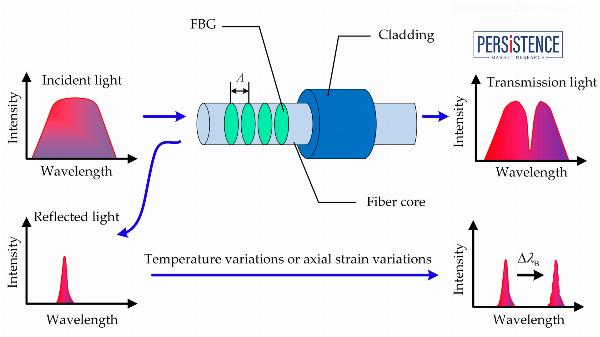Distributed Acoustic Sensing Market Technological Advancements and Trends

Strong 8k brings an ultra-HD IPTV experience to your living room and your pocket.
The Distributed Acoustic Sensing (DAS) market has undergone significant transformation in recent years, propelled by rapid technological advancements and growing demand across various industries. DAS technology, which leverages fiber optics to detect and measure acoustic waves along a length of optical fiber, has evolved from a niche application to a key player in sectors ranging from oil and gas to transportation and security. This article explores the current technological advancements and emerging trends in the DAS market, providing insights into how these developments are shaping the future of this innovative technology.
Distributed Acoustic Sensing (DAS) technology uses fiber-optic cables to detect and analyze acoustic signals along the entire length of the fiber. This technology is increasingly employed in various applications, including oil and gas, transportation, security, and infrastructure monitoring. DAS systems convert vibrations and acoustic signals into data, providing real-time, high-resolution monitoring over long distances. The global DAS market is experiencing robust growth, driven by the increasing need for advanced surveillance and monitoring solutions. According to Persistence Market Research's projections, the distributed acoustic sensing (DAS) market is projected to grow at a CAGR of 12.5%, reaching US$ 2.3 billion by 2033, up from US$ 701.1 million in 2023.
Technological Advancements in Distributed Acoustic Sensing
• Enhanced Sensitivity and Accuracy
Recent advancements in DAS technology have significantly improved sensitivity and accuracy. Modern DAS systems can detect minute changes in acoustic signals with high precision, thanks to enhanced signal processing algorithms and advanced laser technology. These improvements enable DAS systems to pick up subtle vibrations and sounds over long distances, making them increasingly useful for applications that require high-resolution data.
• Integration with Machine Learning and AI
Machine learning (ML) and artificial intelligence (AI) are transforming DAS technology by enabling more sophisticated data analysis and interpretation. AI algorithms can now analyze vast amounts of acoustic data in real time, identifying patterns and anomalies that would be difficult for human operators to detect. This integration not only enhances the accuracy of DAS systems but also improves their ability to predict and respond to potential issues before they become critical.
• Advances in Fiber Optic Technology
Fiber optic technology has seen remarkable advancements that benefit DAS systems. New types of optical fibers, such as those with improved core designs and better resistance to environmental factors, enhance the performance and durability of DAS systems. Additionally, developments in fiber optic sensors, including improvements in fiber coating and sensitivity, contribute to more reliable and accurate acoustic measurements.
• Real-Time Data Processing and Analytics
The shift towards real-time data processing has been a game-changer for DAS technology. Modern DAS systems are capable of processing and analyzing data on-the-fly, providing instant feedback and insights. This capability is particularly valuable in dynamic environments where rapid decision-making is crucial, such as in security monitoring and infrastructure management.
• Longer Range and Higher Resolution
Technological advancements have extended the range and resolution of DAS systems. Modern systems can now cover distances of up to several hundred kilometers with high-resolution capabilities. This is achieved through improvements in optical signal amplification and advanced data acquisition techniques, allowing for detailed monitoring over vast areas.
Request for Sample@ https://www.persistencemarketresearch.com/samples/12673
Emerging Trends in the Distributed Acoustic Sensing Market
• Growing Adoption in Oil and Gas Sector
The oil and gas industry has been a significant adopter of DAS technology, utilizing it for pipeline monitoring, well integrity assessment, and seismic surveying. The ability of DAS systems to provide continuous, real-time monitoring over long distances makes them ideal for detecting leaks, monitoring pressure changes, and assessing the condition of critical infrastructure. As the industry increasingly focuses on safety and efficiency, the demand for DAS technology is expected to grow.
• Expansion into Transportation and Infrastructure
DAS technology is finding new applications in transportation and infrastructure management. In railways, DAS systems are used to monitor track conditions and detect faults, enhancing safety and reducing maintenance costs. Similarly, in urban infrastructure, DAS systems are being employed to monitor bridges, tunnels, and roads for structural integrity and to detect potential issues early.
• Enhanced Security and Surveillance Applications
Security and surveillance applications are a growing area of interest for DAS technology. The ability to detect and analyze vibrations and acoustic signals can be used for perimeter security, intrusion detection, and monitoring sensitive areas. With the increasing emphasis on security in both public and private sectors, DAS systems offer a valuable tool for enhancing surveillance capabilities.
• Integration with Smart City Initiatives
As cities evolve towards becoming "smart," DAS technology is playing a role in integrating various urban monitoring systems. DAS systems can contribute to smart city initiatives by providing data on environmental conditions, traffic flow, and infrastructure health. This integration supports more efficient city management and improved quality of life for residents.
• Focus on Environmental Monitoring
Environmental monitoring is an emerging application for DAS technology. By detecting vibrations and acoustic signals associated with natural phenomena, such as earthquakes or volcanic activity, DAS systems can provide valuable data for early warning systems and disaster preparedness. This application aligns with growing global efforts to enhance environmental monitoring and disaster response capabilities.
• Increased Emphasis on Data Security and Privacy
As DAS technology becomes more widespread, there is a heightened focus on data security and privacy. The ability of DAS systems to capture and analyze sensitive information necessitates robust security measures to protect against unauthorized access and data breaches. Ensuring that DAS systems are equipped with advanced encryption and security protocols is becoming increasingly important.
The Distributed Acoustic Sensing market is undergoing a period of rapid innovation, driven by technological advancements and expanding applications across various industries. Enhanced sensitivity, real-time data processing, and integration with AI are transforming the capabilities of DAS systems, making them more versatile and valuable for a wide range of applications. As the technology continues to evolve, the market is poised for significant growth, with increasing adoption in sectors such as oil and gas, transportation, security, and environmental monitoring.
The future of DAS technology looks promising, with ongoing developments set to further enhance its performance and applications. As industries seek more sophisticated solutions for monitoring and data analysis, DAS systems will play a crucial role in meeting these demands and shaping the future of technological innovation.
Follow Us: LinkedIn | Medium | Twitter
Note: IndiBlogHub features both user-submitted and editorial content. We do not verify third-party contributions. Read our Disclaimer and Privacy Policyfor details.


